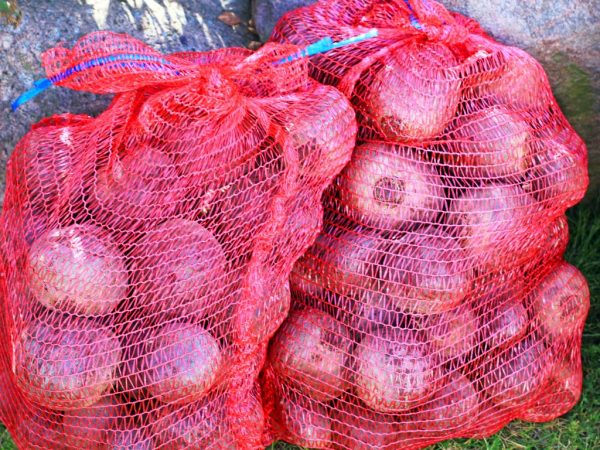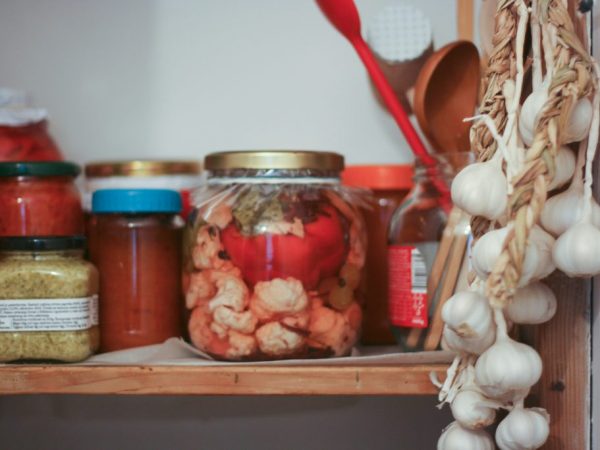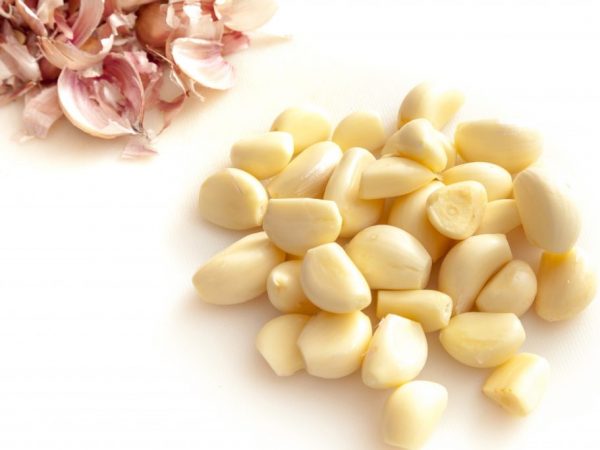Rules for storing garlic in winter at home
Garlic is a great addition to any meal. It is not enough to properly grow a vegetable and put it in a cellar. Storing garlic in the winter at home requires certain knowledge and skills, otherwise you can lose most of the harvest.

Rules for storing garlic in winter at home
Why does garlic spoil
To understand how to properly store garlic at home in winter, you need to figure out why it deteriorates. Of course, the main reason is non-compliance with storage rules. In addition, there are 2 more reasons that provoke the appearance of rot.
- Fungal diseases.
- Nematodes.
All affected root crops are best removed immediately. If you do not cull the affected garlic in time, you can lose half of the crop. Before laying root crops for long-term preservation, you need to carry out a thorough culling.
Storage preparation
Harvesting
In order to preserve the quality indicators of the crop to the maximum, you need to harvest it correctly. Harvesting times will vary by crop variety. There are two types of root crops:
- spring or summer;
- winter.
Both varieties are best harvested when the tops turn yellow and lie on the ground. For spring, this is the period from 1 to 15 August. Winter garlic is dug up at the end of July. Digging is carried out with a shovel or pitchfork. The main thing is not to damage the roots when digging up.
Stage of treatment
Bulbs with mechanical damage are immediately discarded for food, it cannot be preserved. After harvesting, root crops should not be immediately sent for long-term preservation. They need to be thoroughly dried in the sun or in a warm, dry room.
After drying, the stems are cut off. Only root crops that are planned to be stored in braids are not cut off. Storing garlic at home requires careful sorting of the roots. Rejected:
- empty garlic;
- with visible damage by rot or nematodes;
- with peeled off the husk.
Mechanically damaged root vegetables can be frozen and used later as a seasoning for many dishes. Leave some for fresh food. In addition, you can grind damaged teeth and dry them by mixing with herbs. An excellent natural seasoning will come out.
Preservation methods

We braid in braids
How to store garlic at home during the winter? There are several ways:
- braids;
- wooden boxes and jars;
- mesh;
- waxing.
How to properly store garlic at home in a private house or apartment? The choice of premises is of great importance for the safety of the crop, because violations of temperature or humidity can lead to rotting or overdrying of vegetables. In private estates, there is usually a cellar or basement, where, in fact, vegetables and spend the winter. In a city apartment, garlic can be stored on a glassed-in balcony. In some apartments, storage rooms are provided, if they are properly equipped, you can equip a good vegetable store.
Refrigeration is an alternative method. However, this often brings inconvenience, because garlic will take up a lot of space. The storage temperature for types of garlic will be different:
- winter - 1- 3 ℃;
- summer - 16-20 ℃.
Braids
The old "grandmother's" storage method in braids is quite popular today. For its implementation, you need to wait for the garlic to dry well. Leave the bulb and stem. They begin to weave a braid from the bottom up, with 3 root crops. To make the structure more durable, you can weave wire.
Carefully add 1 head each. One braid can contain up to 20 garlic. In this form, you can keep the garlic until spring in the basement or in the attic. In the apartment, spring varieties can be stored in the kitchen. Garlic braids are not only a way to preserve the harvest, but also to decorate the interior.
Boxes and cans
Depending on where the root crops will be stored, in an apartment or cellar, containers are selected. These can be glass jars or wooden boxes. Preservation in glass jars is considered an effective method. Banks are pre-sterilized and dried. Then the dried onions are placed in them.
To improve keeping quality, the teeth or heads are sprinkled with flour and the jar is closed with a nylon lid. When storing root crops in an apartment, before placing them in glass jars, each bulb is wrapped in 2 layers of cling film. Only the heads are wrapped, the tails are left open. After that, they are tightly packed in a prepared container. You cannot cover the jar with a lid during such storage.
For storage in large rooms, a wooden box is selected, with holes in the side walls and the bottom. This ensures good oxygen circulation and maintains the juiciness of the product. A thin layer of bedding is poured onto the bottom of the container. You can use as bedding:
- ash;
- salt;
- sawdust.
A layer of root crops is folded onto the litter. Then sprinkle with bedding. Thus, the box is filled to the top. This is a great way to store garlic in the cellar during the winter.
Grids
Winter and spring varieties are perfectly stored in nets. This is a great option for a cellar or garage. Before placing the roots in bags, rinse each onion in a saline solution. Then dry it.
If the room has a reduced level of humidity, then it is recommended to sprinkle the roots with onion peels. Instead of nets, you can use unnecessary nylon tights. There are a variety of ways to save. They all depend on the purpose and place where the root crops will be stored.
Waxing method
This unusual method allows maintaining the quality of the product for a long time. After heating the paraffin, dip the garlic in it, gently holding it by the tail. When the head is completely covered with paraffin, remove the vegetable and hang to dry.
When the paraffin has hardened, the vegetables are placed in wooden boxes and placed in a cool, dark room. In this form, the roots retain the necessary vitamins and minerals until spring. The advantage of the method is protection against the spread of fungal diseases.
Storing peeled cloves

Peeled cloves are also stored
Peeled garlic can only be stored in the refrigerator. The teeth are freed from the skin, folded in an airtight bag and placed in the freezer. You can keep the peeled garlic in oil. To do this, take 300-400 ml of sunflower oil and heat it in a frying pan. Then the oil is poured into a jar and the teeth are poured into it.
The method of preserving in oil allows not only to preserve the quality of root crops, but also to obtain garlic oil. It can be used for any purpose in the household. This oil will be a great addition to any salad. Store jars with cloves in the refrigerator or put them on the shelves in the cellar.
Storage rules
Before deciding how you can store garlic at home, you need to study some of the nuances. Each method is designed for a specific time frame:
- in flour, salt, paraffin, bags - shelf life is 5-9 months;
- in oil no more than 3 months;
- in glass jars - 3 months;
- in the freezer - about a year.
It is important to take into account the characteristics of the varieties of culture. It is believed that winter varieties are stored worse, but this is far from the case. Some varieties are designed to last up to 9 months. When growing garlic, you need to take into account its long-term adaptation to climatic conditions, therefore it is recommended to use only zoned varieties. The safety of the crop will completely depend on this.
Only summer varieties are suitable for weaving into braids. It can be stored using any of the above methods. Winter varieties are not suitable for storage in warm rooms. This vegetable can be stored along with onions in linen bags or well-ventilated wood boxes.
Final part
Many summer residents make a big mistake, believing that it is enough to grow garlic, put it in a box and then it will be stored by itself. Every little thing plays a role in preserving the harvest: from the selection of the variety and the method of planting to the harvest and the method of growing. Proper storage requires taking into account the characteristics of the room, purpose and variety. For example, winter varieties cannot be stored in an apartment at room temperature.
The optimum storage temperature for winter varieties is 1-3 ℃ above 0. Spring varieties can be stored at room temperature. Storage methods in boxes and linen bags or nets have proven to be the best. It is very important to properly prepare the crop for storage.
After digging out, the heads must be dried. It is advisable to do this in the sun, but if the weather does not allow, then it can be done in a warm, dry room. When pruning root crops, be sure to leave a tail about 5 cm.Do not store garlic next to potatoes. If you plan to store peeled garlic, it is important to keep in mind that it can only be stored in the refrigerator.


